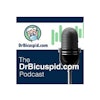
Adults who own a home and make more than $2,900 per month are nearly twice as likely to visit the dentist as those who do not own a home and earn less overall. These findings come from a new study that sought to evaluate how wealth correlates with dental health in the U.S.
In the U.S., researchers typically derive socioeconomic status from education and income. But a team of international researchers wanted to know whether the correlation between socioeconomic status and dental visits would still exist if they used income and wealth instead. They published their findings on August 23 in BMC Oral Health.
"Most recently, wealth rather than income was reported to be more sensitive as an indicator of socioeconomic disparity in health-related outcomes," wrote the authors, led by Alexander Kailembo, DDS, MPH, DPH, from the National Institute of Dental and Craniofacial Research at the U.S. National Institutes of Health. "The purpose of this study is to improve understanding of income and wealth as correlates of socioeconomic disparity in dentist visits among adults in the U.S. so that policymakers may be better informed about targeting interventions to improve access to dental care."
What does wealth got to do with it?
Previous research has established that a dental visit in the past 12 months is correlated with greater quality of life and dental health satisfaction. However, adults with lower socioeconomic status are less likely to see a dentist on an annual basis than those with higher socioeconomic status. Therefore, Dr. Kailembo and colleagues were curious whether adults with lower socioeconomic status, defined by less wealth, were also less likely to visit the dentist.
“Wealth rather than income was reported to be more sensitive as an indicator of socioeconomic disparity in health-related outcomes.”
For their study, the researchers used deidentified data from the 2011-2014 National Health and Nutrition Examination Surveys (NHANES). The surveys are conducted by the U.S. Centers for Disease Control and Prevention's Center for Health Statistics and are designed to provide nationally representative data about the health status of children and adults in the U.S.
The authors defined income status based on the ratio of family income to the poverty level threshold, also known as the poverty income ratio. For their study, poor income was defined as a family income lower than the poverty level, while high income was defined as a family income three times the poverty level or more.
Meanwhile, wealth status was based on monthly income and home ownership. Adults with a monthly income of less than $2,900 and who did not own a home were considered low-wealth, while adults with a monthly income of more than $2,900 and who did own a home were considered high-wealth.
In total, 39% of the 9,246 adult survey participants had not visited a dentist in the past 12 months. However, dental visits varied significantly based on income and wealth, as well as age, sex, ethnicity, education level, smoking status, and oral health status.

Adults in the high-income and high-wealth groups were almost twice as likely to have visited the dentist than those in the low-income and low-wealth groups, according to the study findings. Older age also was associated with a dental visit in the income group but not the wealth group.
"Possible explanations for the observed difference may be that wealth reflects net accumulation of advantage and disadvantage over the life course, while income reflects the direct and immediate impacts of a lack of resources," the authors wrote.
They also observed similar trends for age and sociodemographic factors, such as race and ethnicity.
"Moreover, without adjusting for wealth, participants aged 20-44 were more significantly likely to not have a dentist visit, but after adjusting for wealth and other sociodemographic factors, the association was not significant," the authors wrote. "One possible explanation is that there are other cultural factors impacting on dental utilization."
First-of-its-kind study
This study is one of the first to provide a new look at how wealth correlates with health; however, it still had a number of shortcomings. First, wealth is hard to define and measure, and income and homeownership are only two factors that can contribute to an individual or family's overall wealth. Therefore, the authors noted their findings related to wealth should be interpreted with caution.
Furthermore, NHANES relies on self-reporting data, which can be subject to bias, and the researchers were not able to account for other environmental and psychosocial factors, such as social support systems, participant location, and whether participants had dental insurance.
"This is the first study of its kind to analyze wealth as a socioeconomic variable using NHANES data," the authors wrote. "We used two indicators -- monthly family income and home ownership -- to construct a wealth variable. Nevertheless, the results of our study should be interpreted with caution because capturing an individual's wealth is a complex undertaking."



















